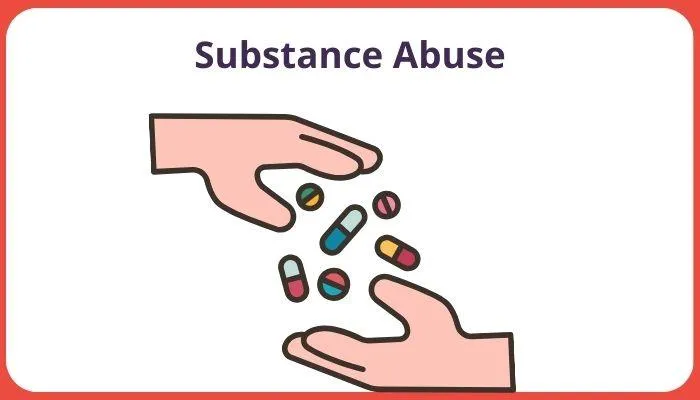Every child's well-being matters.
Case Review Articles
Quick access:
VICTIMS
ADULT ACTIONS
Alison Kelly – data issue
Amina Noor (FGM)
Quick access:
VICTIMS
ADULT ACTIONS
Alison Kelly – data issue
Amina Noor (FGM)

How Can Being Exposed to Substance Abuse at Home Impact Early Years Children?
Custom HTML/CSS/JAVASCRIPT
Children in their early years are highly vulnerable to the effects of their home environment. Exposure to substance abuse—whether alcohol, illegal drugs, or prescription medication misuse—can have significant physical, emotional, and developmental consequences. Early years practitioners play a crucial role in recognising signs of harm and taking appropriate action to safeguard children.
The Impact of Substance Abuse on Young Children
Emotional and Psychological Effects:
Increased anxiety and stress due to unpredictable behaviour from parents or caregivers.
Attachment difficulties, leading to struggles in forming secure relationships.
Higher risk of developing mental health issues such as depression and low self-esteem.
Potential exposure to domestic violence, which can compound emotional trauma.
Developmental and Behavioural Issues:
Delayed speech and language development due to neglect or lack of stimulation.
Difficulty concentrating and learning in nursery settings.
Increased risk of behavioural problems, such as aggression or withdrawal.
Poor impulse control and emotional regulation difficulties.
Physical Health Concerns:
Poor hygiene and malnutrition due to neglect.
Increased risk of accidents and injuries in unsafe home environments.
Exposure to harmful substances, leading to poisoning or health complications.
Sleep disturbances affecting overall development.
What Should Practitioners Look Out For?
Practitioners in early years settings must be observant and aware of signs that a child may be living in a home affected by substance abuse. Key indicators include:
Changes in Behaviour: A child may become withdrawn, anxious, or show excessive clinginess.
Neglect: Persistent hunger, dirty clothing, or untreated medical conditions.
Inconsistent Attendance: Regular absences or arriving at nursery unwashed or inappropriately dressed.
Unexplained Injuries: Frequent bruises or accidents that do not have a reasonable explanation.
Developmental Delays: Struggles with communication, emotional regulation, or social interaction.
Disclosures: A child talking about alcohol, drugs, or chaotic home life may indicate concerns.
What Actions Should Be Taken?
If a practitioner suspects that a child is being impacted by substance abuse at home, they must follow safeguarding procedures in line with UK laws and guidelines:
Record Concerns: Document observations, conversations, and incidents factually and confidentially.
Follow the Setting’s Safeguarding Policy: Speak to the designated safeguarding lead (DSL) for guidance.
Engage with Parents or Caregivers (if Safe to Do So): Sensitive discussions may help identify support needs.
Refer to Social Services: If concerns persist, practitioners have a duty to report cases to children’s social care.
Work with Multi-Agency Support: Collaborate with health visitors, social workers, and addiction support services.
Provide a Safe and Supportive Environment: Maintain a nurturing atmosphere in the setting where children feel secure.
Relevant UK Safeguarding Legislation about Substance Abuse
Practitioners must adhere to:
Children Act 1989 & 2004 – Duty to safeguard and promote children’s welfare.
Working Together to Safeguard Children (2018) – Guidance on inter-agency cooperation.
Keeping Children Safe in Education (2023) – Highlights responsibilities for early years professionals.
The impact of substance abuse at home can be profound, affecting a child’s emotional, physical, and cognitive development. Early years practitioners are often the first to notice signs of distress and play a critical role in safeguarding children. By being vigilant, following safeguarding procedures, and providing a stable environment, professionals can help mitigate the risks and support children in their early years.


How Can Being Exposed to Substance Abuse at Home Impact Early Years Children?
Custom HTML/CSS/JAVASCRIPT
Children in their early years are highly vulnerable to the effects of their home environment. Exposure to substance abuse—whether alcohol, illegal drugs, or prescription medication misuse—can have significant physical, emotional, and developmental consequences. Early years practitioners play a crucial role in recognising signs of harm and taking appropriate action to safeguard children.
The Impact of Substance Abuse on Young Children
Emotional and Psychological Effects:
Increased anxiety and stress due to unpredictable behaviour from parents or caregivers.
Attachment difficulties, leading to struggles in forming secure relationships.
Higher risk of developing mental health issues such as depression and low self-esteem.
Potential exposure to domestic violence, which can compound emotional trauma.
Developmental and Behavioural Issues:
Delayed speech and language development due to neglect or lack of stimulation.
Difficulty concentrating and learning in nursery settings.
Increased risk of behavioural problems, such as aggression or withdrawal.
Poor impulse control and emotional regulation difficulties.
Physical Health Concerns:
Poor hygiene and malnutrition due to neglect.
Increased risk of accidents and injuries in unsafe home environments.
Exposure to harmful substances, leading to poisoning or health complications.
Sleep disturbances affecting overall development.
What Should Practitioners Look Out For?
Practitioners in early years settings must be observant and aware of signs that a child may be living in a home affected by substance abuse. Key indicators include:
Changes in Behaviour: A child may become withdrawn, anxious, or show excessive clinginess.
Neglect: Persistent hunger, dirty clothing, or untreated medical conditions.
Inconsistent Attendance: Regular absences or arriving at nursery unwashed or inappropriately dressed.
Unexplained Injuries: Frequent bruises or accidents that do not have a reasonable explanation.
Developmental Delays: Struggles with communication, emotional regulation, or social interaction.
Disclosures: A child talking about alcohol, drugs, or chaotic home life may indicate concerns.
What Actions Should Be Taken?
If a practitioner suspects that a child is being impacted by substance abuse at home, they must follow safeguarding procedures in line with UK laws and guidelines:
Record Concerns: Document observations, conversations, and incidents factually and confidentially.
Follow the Setting’s Safeguarding Policy: Speak to the designated safeguarding lead (DSL) for guidance.
Engage with Parents or Caregivers (if Safe to Do So): Sensitive discussions may help identify support needs.
Refer to Social Services: If concerns persist, practitioners have a duty to report cases to children’s social care.
Work with Multi-Agency Support: Collaborate with health visitors, social workers, and addiction support services.
Provide a Safe and Supportive Environment: Maintain a nurturing atmosphere in the setting where children feel secure.
Relevant UK Safeguarding Legislation about Substance Abuse
Practitioners must adhere to:
Children Act 1989 & 2004 – Duty to safeguard and promote children’s welfare.
Working Together to Safeguard Children (2018) – Guidance on inter-agency cooperation.
Keeping Children Safe in Education (2023) – Highlights responsibilities for early years professionals.
The impact of substance abuse at home can be profound, affecting a child’s emotional, physical, and cognitive development. Early years practitioners are often the first to notice signs of distress and play a critical role in safeguarding children. By being vigilant, following safeguarding procedures, and providing a stable environment, professionals can help mitigate the risks and support children in their early years.

Quality Early Years Ltd.,
Dickens House,
Guithavon Street,
Witham, Essex,
England, CM8 1BJ
© Quality Early Years Ltd 2025

